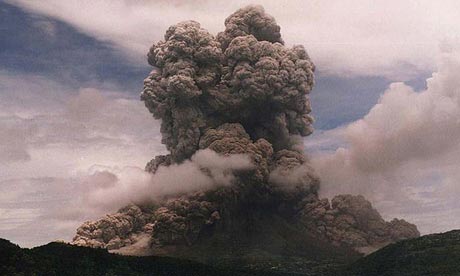Exposure to volcano ash can cause acute respiratory morbidity, especially in those with a pre-existing respiratory disease. Ultra-fine air pollution such as volcanic ash and discharges of aerosol and acid gases can travel hundreds of kilometers and can cause health effects far from where they originated.
The majority of the deaths that are recorded as a result of volcano outbreaks are in relation to volcano-induced famine, tsunamis, and mudflows. But according to Dr. Clair Horwell of the Durham University’s Institute of Hazard and Risk Research, official statistics often do not account for, or greatly underestimate, morbidity that is associated with the exposures to volcanic air pollution.
Dr. Clair Horwell writes that an important predictor of the scale and nature of respiratory effects of volcanic ash is the mineralogical composition and the concentration of the ash particles that are inhaled and penetrate deeply into the lungs.
A 2003 risk assessment of the UK Department for International Development found, that the population in areas that are most affected by ash falls has >1% chance of developing early radiological changes of silicosis when exposed over a period of 20 years. People who work or spend a lot of time outdoors were found to have an increased risk of 2-3% and up to 10%.
There are on average 70 volcano eruptions worldwide each year.
Ref:
- Occup Environ Med 2006; 63:149-156. doi: 10.1136/oem.2005.022459; THE HEALTH HAZARDS OF VOLCANOES AND GEOTHERMAL AREAS A L Hansell, C J Horwell, C Oppenheimer
- Durham University 2007, http://www.dur.ac.uk/




